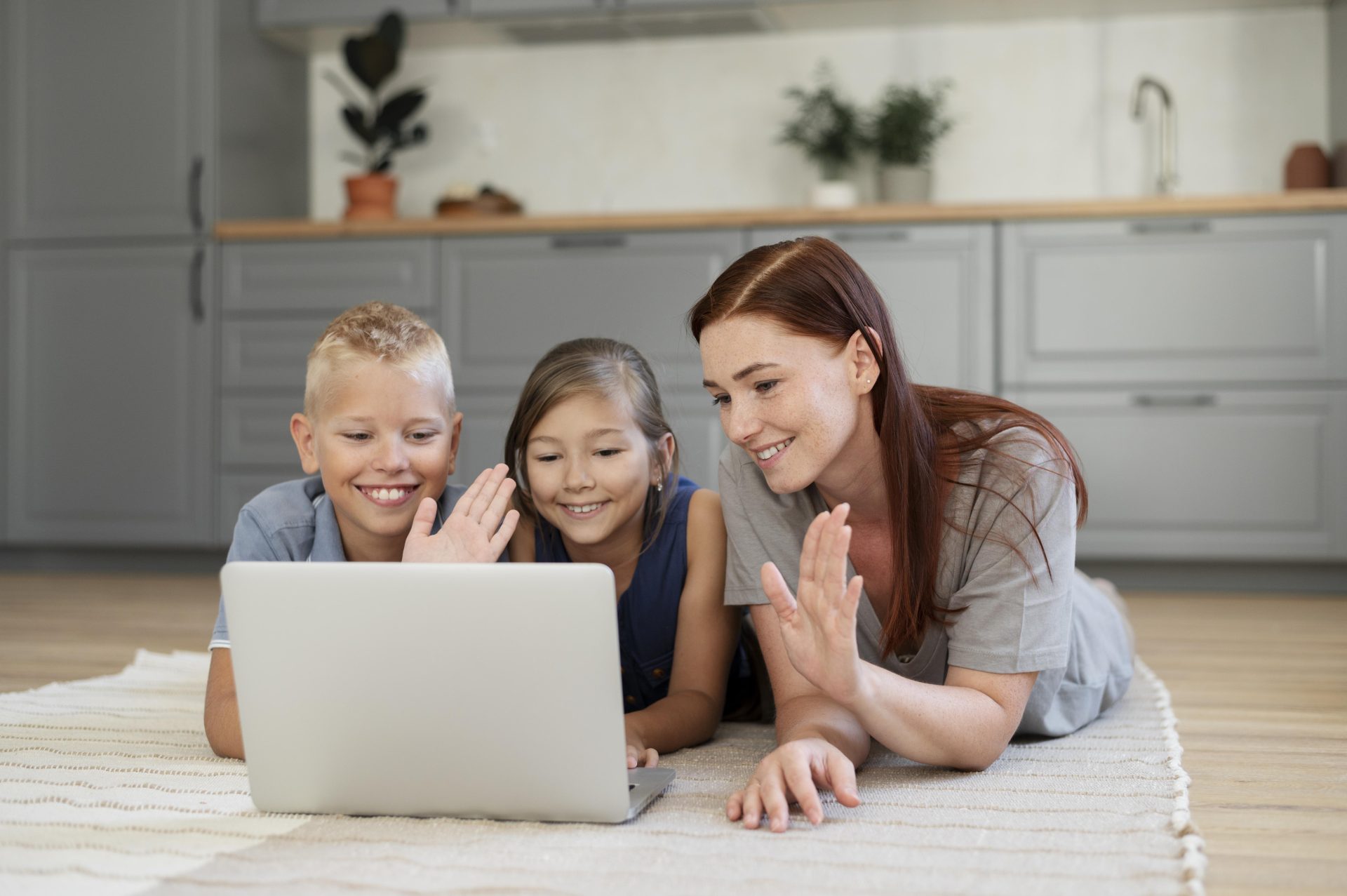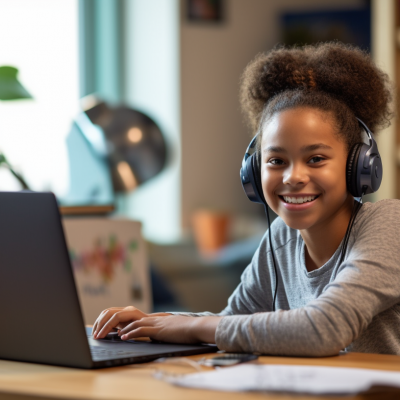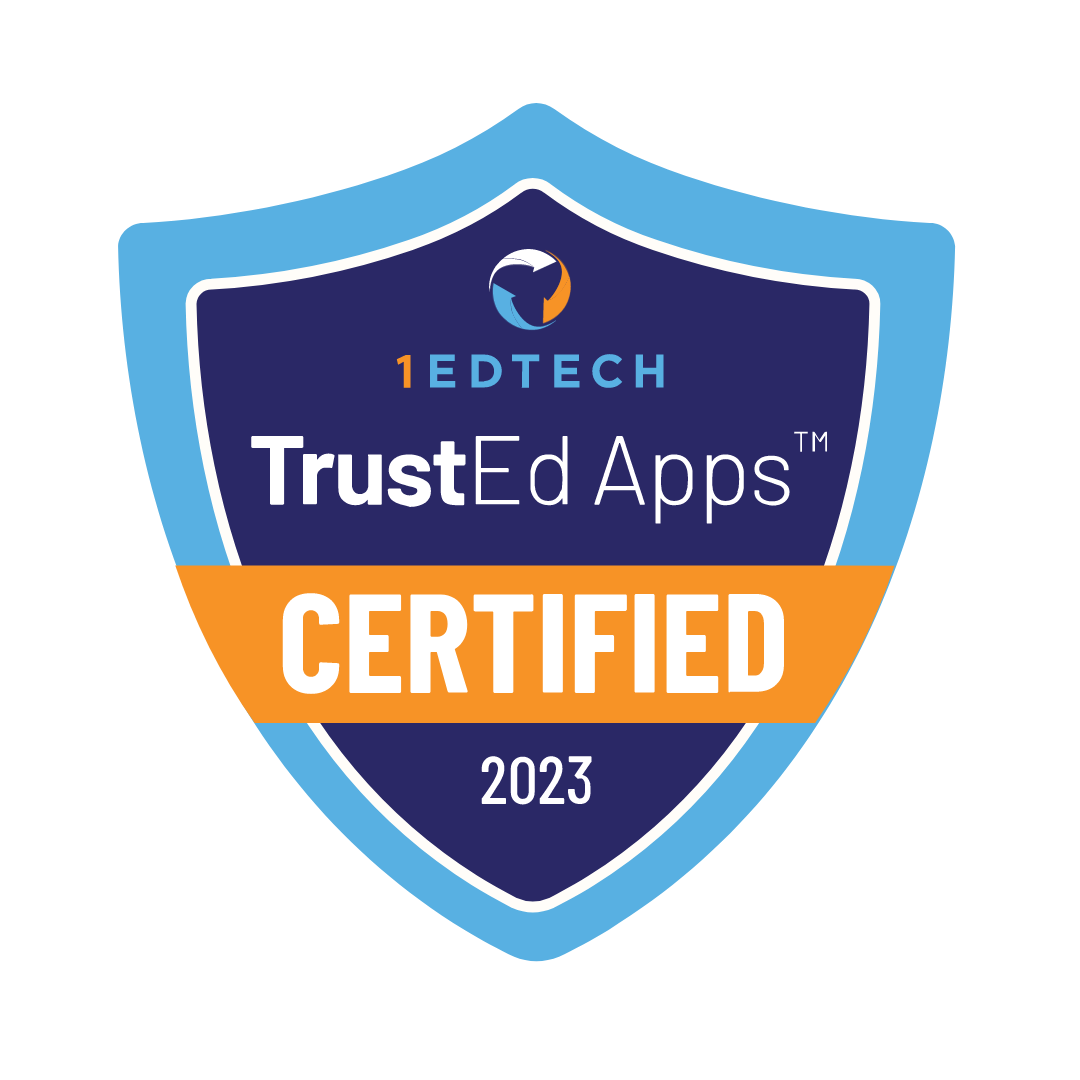Online education is a vast landscape rich in resources such as educational websites, online libraries, and prominent platforms. Such platforms offer useful materials. These platforms provide textbooks, interactive lessons and games. They stimulate the learning process, similar to flipping through your favorite textbook. You may not have expected that even your regular website can become a hub for these resources. All you need to do is add a corner with links leading to such valuable materials. Your regular web surfing will suddenly turn into an educational journey. Ready to take the plunge?
To create a productive homeschooling environment, set aside a dedicated study space. Establish a consistent routine and utilize online educational platforms and resources. Also, hands-on activities and interactive learning increase engagement and memorization. This is true for students of all ages.
Contenido
Finding the Right Home Learning Resources

When it comes to learning at home, the key is to find the right resources. There are many options – educational websites, virtual libraries and reputable platforms. They offer a wide range of materials. These include textbooks, interactive lessons and educational games. The key is to find resources that fit your needs and learning style.
Educational websites can provide a variety of materials for different subjects and grade levels. For example, there is some difficulty with algebra. There are sites that offer step-by-step tutorials on solving equations or practice problems to test your skills. Look for interactive lessons that bring a fun and engaging element to learning. Interactive lessons often include videos, quizzes, and other assignments. They aim to reinforce knowledge in an enjoyable way.
And let’s not forget about access to online libraries. They offer a wealth of knowledge in the form of e-books, articles and research papers. This allows you to research and learn from the comfort of your own home. Many reputable universities also provide online access to their libraries. This ensures that students are provided with a rich collection of academic resources.
With such accessible and diverse resources, you can tailor your educational experience to suit your individual preferences and goals. This could include interactive lessons and e-books from online libraries. It could also include curated content on educational websites. The possibilities for enriching your learning journey are endless!
At-Home Educational Materials

When it comes to learning at home, having access to a variety of learning materials is fundamental. This allows for a well-rounded education. These materials play a crucial role in supplementing lessons. As well as providing students with the tools they need to succeed. So what are these materials?
E-books. E-books are becoming increasingly popular. Because they provide the convenience of accessing an entire library from any device. Look for e-books that cover many subjects. They are for different age groups and reading levels.
Workbooks and printable worksheets. These hands-on resources let students practice what they’ve learned in a structured way. Whether it’s math problems. As well as science experiments or language arts exercises. Having workbooks and printable worksheets on hand can help bring learning to life.
A Variety of Subjects
It is important to have the right materials on hand that cover a variety of subjects. From fundamental subjects such as math and science to language arts and history. It is important to offer a wide range of materials that cater to different interests and learning styles.
For example, math workbooks can include exercises from basic arithmetic to algebra. And they will be designed for different levels of proficiency. At the same time, science resources should cover topics such as biology, chemistry and physics. Which allows students to explore different scientific concepts.
By offering a wide range of subjects, you are not only catering to different interests. But also provide comprehensive support for students in different academic areas.
Accessible and Affordable Resources
To make obtaining educational materials more convenient for both parents and students, it is important to compile lists of free or affordable resources. Many families may be on a tight budget or looking for cost-effective options without sacrificing quality.
Some websites offer sections that will provide lists of free or low-cost e-books, workbooks, printable worksheets, and other educational resources. Thereby making it easier for families to access valuable materials. Thus not creating barriers due to financial constraints.
Clearly, providing diverse and affordable learning materials is important. Especially for creating a rich and holistic homeschooling experience. This enriches education. It also ensures students have access to great resources without any restrictions.
As you prepare to create an effective learning environment at home, think about the impact of structure in optimizing the educational process. Let’s look at ways to create a structured learning environment. It should promote focus and productivity.
Establishing a Structured Learning Environment

When it comes to online education, the environment you run in can have a significant impact on how well you learn. Imagine, you’re running on a rocky, uneven road with walls. They constantly get in your way. Running on a smooth road with no obstacles would be much easier. The same is true for training. Structured learning environments are like smooth roads. They help you move forward easily.
So, the first thing is to find a quiet place. One where you can focus and make it your special place to study. Let’s call it a “study nook.” When you are there, it means that class is in session. And importantly, everyone should respect this place just as much as a regular classroom in school.
I know a student who has his study corner by the window. That is where he likes to feel the sunlight during class. It helps them feel better and be ready to work.
What do you also need? A good, comfortable chair and a desk or table that fits you well. Your feet should comfortably touch the floor when you sit. It also doesn’t hurt to have a few items on hand, like pencils and colored markers, or even a plant to make you feel good!
Some people think they can work anywhere. But think about it from a different perspective. Can you play basketball well if there are dogs running around on the court? Probably not! Distractions don’t help anyone learn better.
So, we’ve set aside a special place for ourselves. Now we need to think about our class schedule. Namely how much of each subject we should study and when to take breaks. Let’s talk about an organized schedule.
Organizing your schedule is the next important step to a successful online education. Now let’s look at how a structured learning relationship contributes to academic growth.
Nurturing Successful Learning Relationships
Building productive and positive learning relationships requires effort and commitment from all participants. Whether student, parent or educator. Active participation in the learning process is essential to creating an atmosphere conducive to effective homeschooling. Ensuring open communication and mutual respect is key. It has a big impact on the success of learning.
For students. Open communication with parents and educators about their learning needs and concerns is very important. Sharing thoughts, ideas, and concerns helps all. It helps them understand how to support education. It’s very important to thank teachers for their guidance. It’s also important to share difficulties with specific subjects or assignments. It helps to get the help and support needed to succeed.
For parents. Encouraging children to express themselves freely. Actively participating in discussions about academic success. And respecting their independence and ability to handle academic responsibilities are all extremely important for parents. When communicating with educators, it is helpful to show appreciation for their efforts. It is equally important to team up with them to improve the quality of the child’s education.
For educators. Encourage positive relationships in the educational setting. Being approachable and empathetic creates an atmosphere in which students feel comfortable. Here they can discuss their problems and express themselves freely. Establishing regular channels of communication with parents will help them to be aware of their child’s progress. And as a consequence, any issues and concerns can be dealt with effectively.
Mr. Johnson, the history teacher, often sends separate messages to each student’s parents. The messages detail their child’s progress. He includes positive feedback and constructive advice for improvement. This simple act shows his dedication. It also builds trust with parents.
By building strong family relationships, everyone sets the groundwork for a good education. This lays a strong foundation for effective collaboration between educators, parents, and students. Which ultimately contributes to an enriched learning experience for all participants.
Let’s take a look at valuable resources to significantly improve the homeschooling experience. For both students and educators.
Guided Curriculum for Home Learning

Creating a structured and guided curriculum for homeschooling is very important for students to receive a well-rounded education. Homeschooled children need a clear roadmap. They are not in a classroom. They should have a sense of direction and purpose in their learning.
Daily lesson plans play a vital role in a complete curriculum. They help students and parents understand what topics will be covered each day. These plans can be tailored to a child’s individual needs and pace of learning. A good lesson plan gives an idea of how the lessons will progress throughout the day. And it also helps keep your child focused and productive.
In addition, educational objectives are an integral part of the curriculum. They serve as milestones for students to reach, giving them a sense of accomplishment and direction. Setting clear goals can motivate students. Of course goals should be achievable. They help students stay on track and take responsibility for their learning journey. Educational goals can be very different. For some, it’s mastering math. Others may include improving reading or completing a science project. By having clear goals, students can work towards achieving them. This fosters a sense of progress and achievement.
In addition, aligning these resources with the standards ensures that the content is up to par. This sets a high standard for homeschooling. It ensures that students get the same education. This is as their peers in traditional schools.
Resources Aligned with Educational Standards
Providing resources aligned with educational standards instills confidence in both educators and parents by ensuring that the content meets recognized benchmarks. This helps with accountability. It also gives students a competitive edge in reaching their academic potential.
Using sample curriculum guides or templates helps parents and educators. It lets them customize lesson plans for their students’ unique needs. The guides can act as blueprints. They offer structure and guidance. But, they also allow flexibility and personalization. This is based on individual learning styles. For example, parents may change these plans to fit specific learning challenges. Or, they can adjust them for areas in which their child excels. With this change, the curriculum becomes tailored to the student’s strengths and weaknesses. This fosters an environment that is good for optimal learning.
By putting these tools and resources on your website, you can help parents and educators. This will enable them to create a rich educational experience for students at home.
Now we have the knowledge to create a good home learning environment. Let’s now find the balance between education and fun.
Balancing Education and Recreation

When it comes to online learning, balance is key. As we know every superhero needs a break between saving the world. In the same way, every student needs a break from studying. Finding time to play, exercise, and create can be just as important as studying.
Consider this. Children need to move and take breaks just as much as adults do, and sometimes even more! This helps them focus better when they get back to studying. A good way to provide your child with physical activity is to encourage outdoor activities. Or, for example, plan fun indoor games that get them moving.
Adding playtime to your child’s schedule promotes their physical and mental health. It allows them to relax and let their thoughts wander. This can improve concentration and learning.
A well-rounded approach to homeschooling includes a combination of educational and recreational activities. This promotes creativity, problem-solving skills, and emotional intelligence.
For example, incorporate art projects such as drawing or building with Lego cubes into the daily routine. This will help lay the foundation for creative thinking. This will benefit the learning process.
Physical activity is just as important. So, make sure to allow time for activities like biking, jogging, or dancing at home. All these activities contribute towards holistic development that goes beyond just academic success.
Some may argue that there isn’t enough time in the day for all this activity. They say that play should come after all school tasks are done. However, experts advocate for holistic education. It prioritizes a balance between learning and leisure.
Finding resources and articles is key. They show the importance of balancing education with play. This is vital for child development. Encourage parents to add these ideas to their children’s daily lives. This can create well-rounded people. They will do well in both school and emotions.
This is a high-stakes game of balancing education and recreation. Prioritizing a holistic approach to learning can create well-rounded people. They thrive both academically and emotionally.









